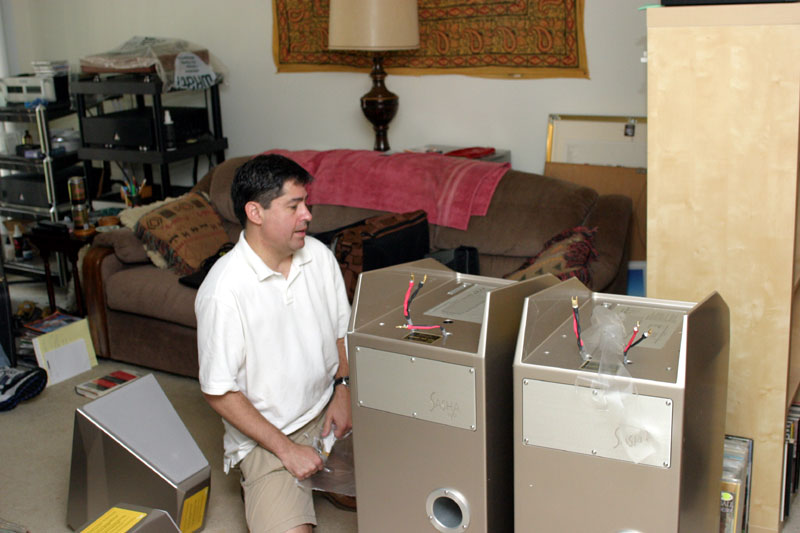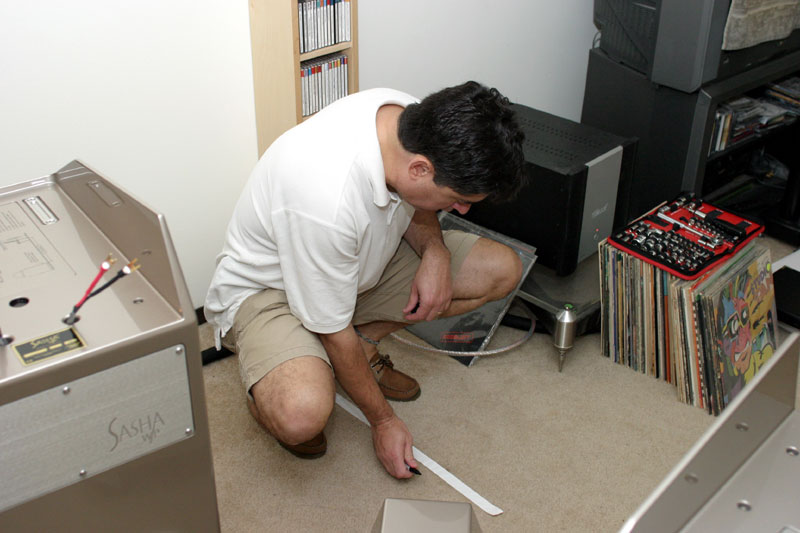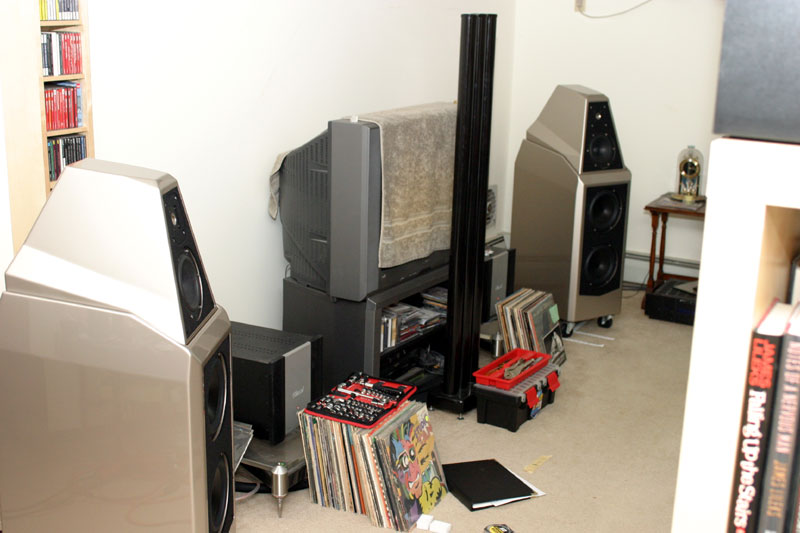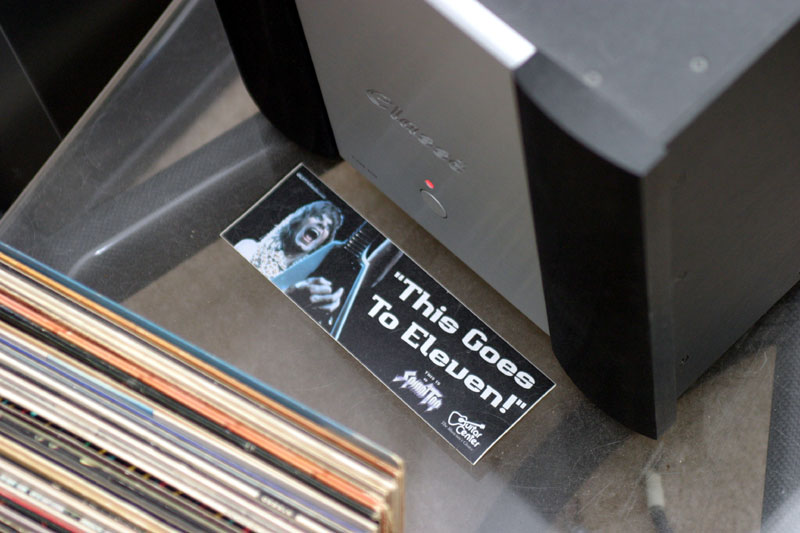Setting Up Sashas
ummer in Minneapolis is unpredictable. When I visited in June 2006, the temperature was in triple digits the entire time, and it felt like the humidity was too. When I was there again at the end of August this year, it was nearly 40 degrees cooler. I was in the Twin Cities this time to observe and document -- two things we audio writers do as a matter of habit. Wilson Audio had shipped one of the first review pairs of the new Sasha W/P speakers ($26,950/pair) to Paul Bolin for review on The Audio Beat. I drove up to the Twin Cities from Southern Wisconsin to help with the grunt work and hear the outcome. The Sasha W/P is an entirely new model for Wilson Audio, a replacement for the WATT/Puppy, which is a true audio classic. The cabinets of the two speakers are completely different, as are the crossovers and some of the drivers, including a version of the magnificent midrange driver used in the Alexandria X-2 and MAXX Series 3. In the past, the WATT had its own crossover, a remnant of the time when David Wilson first introduced it as a location and studio monitor, but that's not the case with the upper module of the Sasha W/P. The crossover for the speaker resides in the bass module, and the upper module cannot function without connection to it.
Paul lives in the Uptown area, near Lake Calhoun in southwest Minneapolis. His 1000-square-foot apartment is typical of so many others: separate living room and dining area, a small kitchen, an equally small bathroom, and a single bedroom. No purpose-built listening chamber for Paul, and that's a good thing in my opinion. His living room's ordinariness means that what he hears is not acoustically tailored to achieve a particular outcome. It's thoroughly average, not extraordinary.
Before unpacking the Sashas, which we did while Paul was at work, we moved his existing speakers -- EgglestonWorks Andra IIs – into the dining area, which is lined with record shelves. The apartment is a profusion of music and audio equipment; such is the wayward fashion in which some audiophiles live in order to pursue their obsession for great music and great sound. Thoreau-like austerity is impossible when you own thousands of LPs and CDs.
As I have seen him do a few times, John Giolas, Wilson Audio's director of sales and marketing, went through David Wilson's "voweling in" routine before determining where the speakers would ultimately go. It's a fascinating process to watch, one you can learn from and apply yourself. John started in the corners with his back to the wall. He then began speaking while walking slowly out into the room. At a certain point, he and anyone else could hear the qualities of his voice change. He did the same on both sides of the room, then used strips of masking tape on the floor as markers for the "zones of neutrality" -- the locations where slap echo, comb filtering and the like have the least effect. Paul had instinctively placed his EgglestonWorks speakers in the same general areas John marked off.
I've witnessed John's fine-tuning routine a number of times -- slight movements forward and back, minute changes in toe-in, all to the sultry tones of Greg Brown. There is a particular 20-second passage of Brown's "Hey Baby Hey" from Further In [Red House Records RHR CD 88] that I've heard hundreds of times, because I've been in the room when John was setting up a pair of speakers. John put the CD player on repeat and let the music play. Over and over again, "the sea was rollin' in slate gray" while he jumped up from the listening seat -- an overstuffed couch in Paul's case -- and moved the speakers one way or another. It's Brown's voice he focuses on, finding the speaker positions where the inherent chestiness is present but not accentuated. This might take a half hour or a few hours -- I've seen it go both ways. Paul's room is somewhat dark in sonic character and emphasizes the midrange, so John was up and down quite a bit, "the sea was rollin' in state gray" burned into my memory further.
After setup was complete, we put the crates out in the
hallway for pickup and storage by a local Wilson Audio dealer. How did the Sashas sound?
I'll leave that discussion to Paul, who is nearly as unpredictable as a Minneapolis
summer. Another pair of Sasha W/Ps will be set up in my very different listening room next
month, and I'll add my thoughts about the speakers to Paul's review. |





